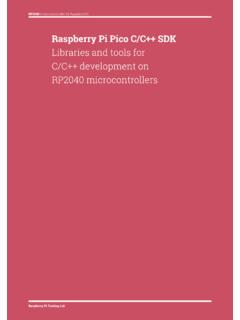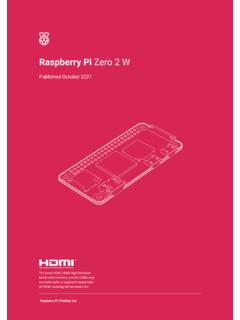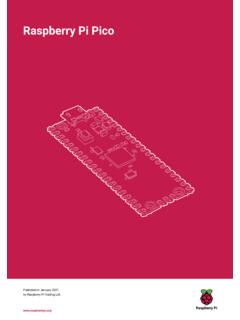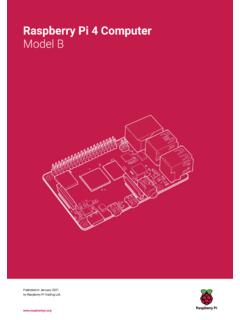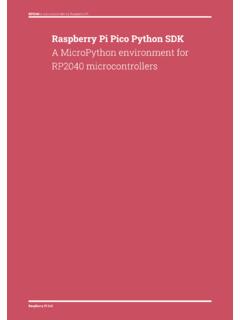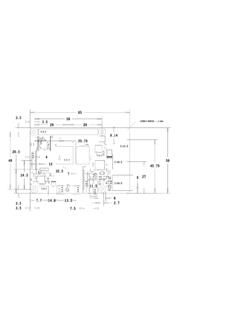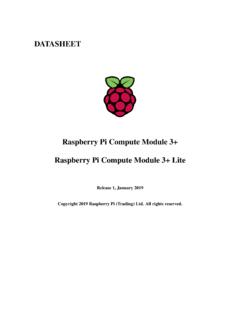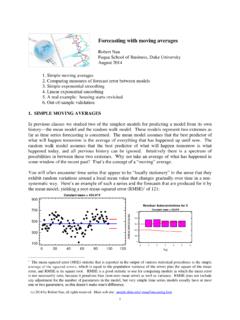Transcription of IQaudio Product Guide - Raspberry Pi
1 V32 IQaudio Limited, Company No: 09461908 IQaudio Product Guide This document covers the installation, software configuration and usage of IQaudio accessories with the Raspberry Pi. v32 2 10-Dec-2020 IQaudio user instructions Contents 1. GETTING STARTED 3 2. WHICH IQaudio BOARD IS BEST FOR ME? 4 3. CONFIGURING LINUX FOR THE IQaudio SOUND CARD 5 4. HEADLESS SOFTWARE 6 5. HOW DO I INSTALL SOFTWARE ON THE PI? 7 6. DAC PRO 8 7. DAC+ 9 8. DIGIAMP+ 10 9. CODEC ZERO 11 10. ADDING THE IQaudio SOUND CARD TO YOUR Raspberry PI 12 11. CODEC ZERO CONFIGURATION 14 12. CONTROLLING THE DIGIAMP+ MUTE / UN-MUTE 16 13. Raspberry PI AUDIO APPLICATIONS 17 14. ADVANCED INFORMATION 21 15.
2 ADDING A ROTARY ENCODER 23 16. FAQ (FREQUENTLY ASKED QUESTIONS) WITH ANSWERS! 24 v32 3 10-Dec-2020 1. Getting Started Thank you for choosing an IQaudio sound card. Next you need to play music, but first you may need to configure the Raspberry Pi and software package you want to use. The IQaudio Product family IQaudio sound cards are all designed to work with the current Raspberry Pi and those that have a 40way male GPIO pin header. This includes Raspberry Pi 4B, 3B+, 3A+, 3, Zero etc. Some of our products are full-size HAT boards for the full-size Raspberry Pi, and others are more suited to the Raspberry PI Zero form factor. High-Resolution Audio Playback DAC Pro DAC+ DigiAMP+ Codec Zero 24bit Depth Hi-Def Audio (96kHz) Full HD Audio (192kHz) v32 4 10-Dec-2020 2.
3 Which IQaudio board is best for me? Each IQaudio sound card has a specific purpose and has been designed to integrate with your existing HiFi / audio or Raspberry Pi equipment. BEST audio playback is from our DAC PRO, DAC+ and DigiAMP+ boards. All support 24bit depth and 192kHz (Full HD Audio). Line Out (RCA) Balanced (XLR) STEREO Speakers (2x35w) MONO Speaker ( ) Head- phones Aux In 1vRMS Aux Out 1vRMS Ext Mic Built in Mic DAC PRO (XLR board) DAC+ DigiAMP+ Codec Zero (MONO) (No Fit) (No Fit) (Electret) Line Out: A double Phono/RCA connector - Normally Red / White in colour. This output is a variable analogue signal ( ) and connect to your existing HiFi (pre-amp or amplifier) or can be used to drive Active speakers (with their own amplifier built in).
4 Balanced Out: An XLR connector - Normally a 3 pin male connector, this is used in Studio and some hi-end hifi systems. It can also be used to drive ACTIVE monitor speakers as used at discos or on stage. STEREO Speakers: Screw terminals - These are normal HiFi speakers (from bookshelf to floor standing), normally with 2 or 3 drive units, where the signal is filtered to each drive unit by an internal cross over within the speaker cabinet. These are known as PASSIVE speakers. MONO Speaker: Screw terminal - Single drive unit speaker, as found in a transistor radio or similar. Headphones: jack socket. Normally a tip/ring/ground (3pin headphone) delivering stereo audio to a set of normal headphones.
5 Our headphone amplifiers on the IQaudio DAC boards can drive up to 80/90ohm impedance headphones. The headphone output of the Codec+ is also aux out. Aux In: A double Phono/RCA connector or socket. Accepts analogue audio up to 1vRMS input. Can be used to record audio from a variable analogue source such as phone / tape recorder or similar. Aux Out: A double Phono/RCA connector or socket. Delivers analogue audio up to 1vRMS output. Can be used to feed audio into an amplifier (but at a reduced volume compared to Line Out) Mic In: a socket for use with an external Electret microphone. Some of our boards have a built in MEMS microphone that is disabled when the external microphone jack is inserted into the socket.
6 V32 5 10-Dec-2020 3. Configuring Linux for the IQaudio sound card All our latest full size audio boards include a pre-programmed EEPROM. This allows Raspberry Pi OS to auto detect and auto configure itself allowing the IQaudio boards to be plug and play. If you need to configure Raspberry Pi OS yourself, you can edit the boot configuration file (found at / ) to manually add the appropriate device-tree overlay: IQaudio Card / DAC+ dtoverlay= IQaudio -dacplus DAC PRO dtoverlay= IQaudio -dacplus DigiAMP+ dtoverlay= IQaudio -dacplus,unmute_amp or dtoverlay= IQaudio -dacplus,auto_mute_amp Codec Zero dtoverlay= IQaudio -codec Disabling the standard Raspberry Pi On-Board Audio To make your IQaudio sound card the primary audio device in Raspberry Pi OS you will need to disable the Raspberry Pi s on-board audio card.
7 This is done simply by commenting out the dtparam=audio=on device tree parameter on your sd card s / file by placing a # at the start of the line, saving the file and rebooting your Pi. / should have the following entry to disable the Pi s on-board sound card. #dtparam=audio=on v32 6 10-Dec-2020 4. Headless software Many of the software packages used with the Raspberry Pi simply turn the Pi into a Headless end-point. That is to say that it doesn't need, or expect, a screen/display to be physically attached to the Raspberry Pi s HDMI socket So if there s no screen how do you control it? Well in some cases you don t need to do anything with the Pi at all.
8 Take the RoonLabs images, that turns the Raspberry Pi into a Roon Certified end-point. The Pi is then controlled form the RoonLabs PC/Mac application which connects to and plays music through the IQaudio sound card on your Raspberry Pi. No screen needs to be attached to the Pi itself. Other headless applications install a web server onto the Pi, so to control it you simply open a browser window on your PC / Mac / Tablet or similar and interact with the Pi based application through a web page. Applications such as Max2 Play, MoodeAudio, Volumio and RuneAudio work this way. Max2 Play - visit their getting started page here: Max2 Play Volumio: v32 7 10-Dec-2020 5.
9 How do I install software on the Pi? The Raspberry Pi normally loads its software from the micro-SD card. Most audio applications assume they are the only thing running on the Pi so most require a dedicated SD card. The applications are normally distributed as a compressed .img file (likely a .zip or .gz file) and this .img file will need to be written to the Pi s SD card to allow the Pi to boot. Can t I just copy the .img file over to the Pi? Err, no. Doing this will just store the .img file on the SD card. The Pi needs the SD card to be formatted in a particular way to allow it to boot / start up and run. Don t worry, there are several ways to do this and some are VERY simple.
10 Got a Mac? Get ApplePi-Baker - Use Windows? Use Win32 DiskImager - Top Tip: Buy a few extra micro SD cards, you ll find it much easier to try things. Also, once you have a working Pi SD card, back it up to your PC/Mac. It s easier to re-write the SD card if things go wrong. Some newer Raspberry Pi allow the Pi to boot from USB sticks or even over Ethernet. v32 8 10-Dec-2020 6. DAC PRO The DAC PRO is a HAT compliant add-on accessory for the Raspberry Pi. The DAC PRO users the Texas Instruments PCM5242 to deliver outstanding Signal to noise Ration and supports Balanced / Differential out in parallel to Phono / RCA line level output. It also includes a dedicated headphone amplifier.
